Night & Day playing cards
‘Night & Day’ playing cards produced by London Underground, United Kingdom
This multi-coloured pack was produced by London Underground as a means of informing staff about the difficulties and dangers of shift work (such as sleep problems, occupational and driving accidents, and long-term health conditions) and, at the same time, as a medium to offer hints and tips to help staff understand the personal effects on their life and to help them feel healthier and happier at work. Recognising that shift work is common in many sectors, including transport, and in response to stakeholders for improved education and awareness among the public and employers about the health effects of shift work, London Underground responded with this colourful and informative offering.
Each suit concentrates on a particular aspect: Eyes wide open: helping you stay awake at night (spades); Counting sheep: facts and tips to help you sleep (diamonds); Timeout: facts and tips for your leisure time (clubs); You are what you eat: healthy eating facts and tips (hearts). The cards are larger than average (10 cm x 6.5 cm), and include 2 jokers and 2 extra cards which explain their rationale►
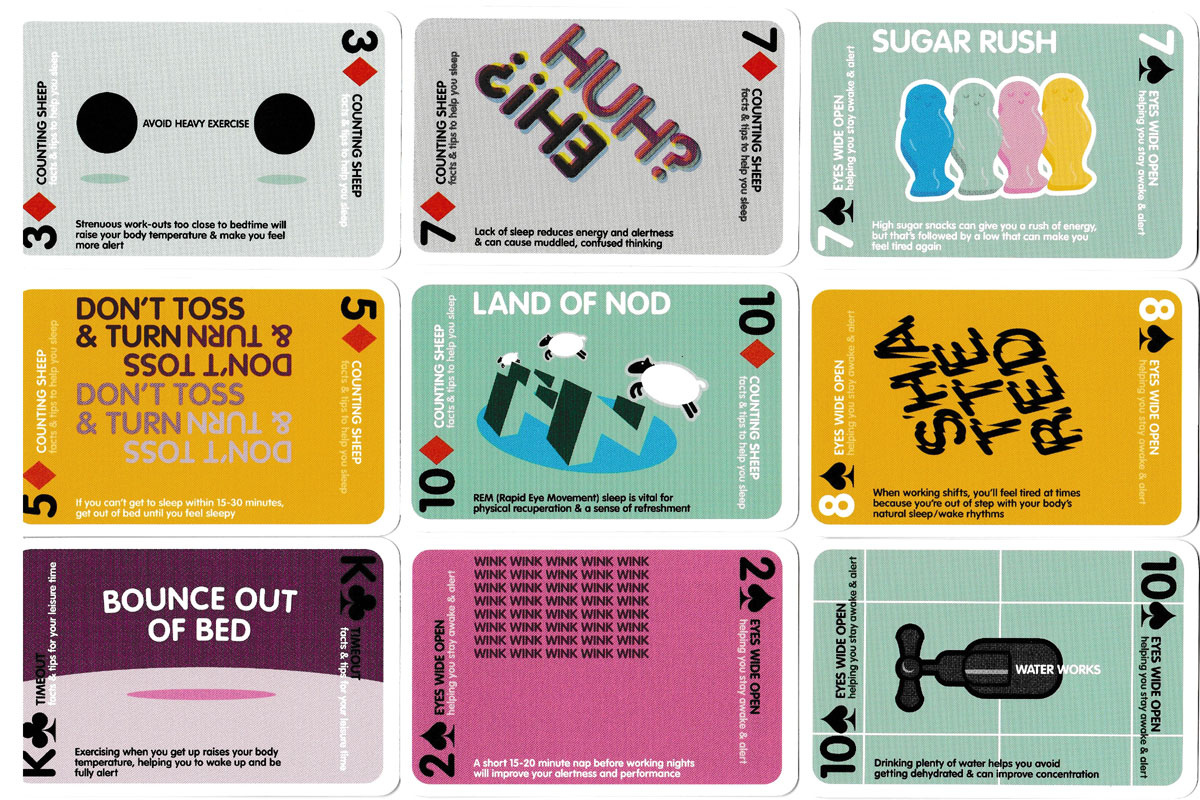


Above: ‘Night & Day’ playing cards produced by London Underground.
By Peter Burnett
United Kingdom • Member since July 27, 2022 • Contact
I graduated in Russian and East European Studies from Birmingham University in 1969. It was as an undergraduate in Moscow in 1968 that I stumbled upon my first 3 packs of “unusual” playing cards which fired my curiosity and thence my life-long interest. I began researching and collecting cards in the early 1970s, since when I’ve acquired over 3,330 packs of non-standard cards, mainly from North America, UK and Western Europe, and of course from Russia and the former communist countries.
Following my retirement from the Bodleian Library in Dec. 2007 I took up a new role as Head of Library Development at the International Network for the Availability of Scientific Publications (INASP) to support library development in low-income countries. This work necessitated regular training visits to many sub-Saharan African countries and also further afield, to Vietnam, Nepal and Bangladesh – all of which provided rich opportunities to further expand my playing card collection.
Since 2019 I’ve been working part-time in the Bodleian Library where I’ve been cataloguing the bequest of the late Donald Welsh, founder of the English Playing Card Society.

Leave a Reply
Your Name
Just nowRelated Articles

52 Ways to talk about adoption
‘52 Ways to talk about adoption’ family-centred playing cards produced by the Center for Adoption Su...

Gone to Pot: Gardener’s playing cards
‘Gone to Pot’: special playing cards for keen gardeners, United Kingdom.
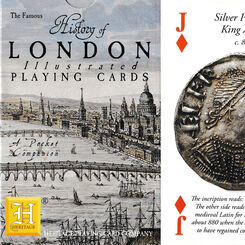
History of London illustrated playing cards
A catalogue in 54 cards of some of the treasures held within the Museum of London collections.

Ethics Education playing cards
Ethics Education playing cards produced by the Centre for Military Ethics at King’s College London, ...
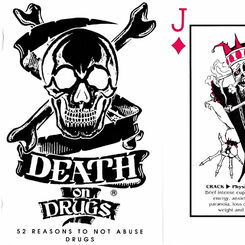
Death on Drugs
Death on Drugs playing cards, United States, 1985.

Youthscape playing cards
Two packs of playing cards offering emotional help and support to young people.
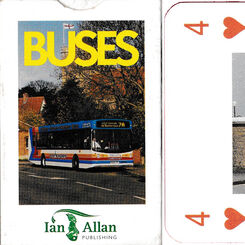
Buses playing cards
Playing cards for bus lovers produced by Collectable Cards Limited & Ian Allan Publishing Ltd.

Take Control : Drugs
Take Control : Drug advice playing cards produced by Safer Publications, United Kingdom, 2007.

Tea & Coffee Lovers playing cards
Tea & Coffee Lovers playing cards produced by Cultzilla.

Radical playing cards
Radical playing cards, identifying radical characters from history, United Kingdom, 2021

Think smoking heroin is safe?
“Think smoking heroin is safe?” harm minimisation playing cards.
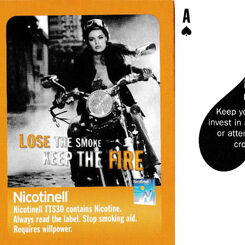
Lose the smoke Keep the fire
“Lose the smoke Keep the fire” playing cards to help quit smoking, published by Nicotinell, 2007.

Cycle all over London
Cycle all over London playing cards published by Transport for London Street Management, 2003.

War on AIDS
War on AIDS playing cards published by ActionAid, United Kingdom, c. 2004.

Better drug laws now
“Better drug laws now” campaign playing cards issued by Release, United Kingdom.

Coffinnails: Smoking Kills
“Coffinnails: Smoking Kills” playing cards highlighting the impact smoking has on life and health, 2...

52 ways to stop smoking
“52 ways to stop smoking”, offering positive help for anyone who wants to give up smoking.

House of Commons Playing Cards
House of Commons playing cards designed to serve as a civic guide to the UK Parliament.
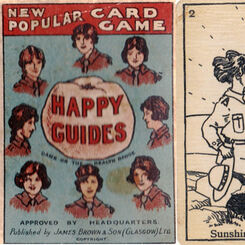
Happy Guides
Happy Guides by James Brown & Son (Glasgow) Ltd. around 1910/1915.

Space Exploration
History of Transport ‘Space Exploration’ playing cards published by Heritage Playing Card Co., 2013....
Most Popular
Our top articles from the past 60 days


 Your comment here. Your comment here. Your comment here. Your comment here. Your comment here. Your comment here. Your comment here. Your comment here. Your comment here. Your comment here. Your comment here. Your comment here. Your comment here. Your comment here. Your comment here. Your comment here. Your comment here. Your comment here. Your comment here. Your comment here. Your comment here. Your comment here. Your comment here. Your comment here. Your comment here. Your comment here. Your comment here. Your comment here. Your comment here. Your comment here. Your comment here. Your comment here.
Your comment here. Your comment here. Your comment here. Your comment here. Your comment here. Your comment here. Your comment here. Your comment here. Your comment here. Your comment here. Your comment here. Your comment here. Your comment here. Your comment here. Your comment here. Your comment here. Your comment here. Your comment here. Your comment here. Your comment here. Your comment here. Your comment here. Your comment here. Your comment here. Your comment here. Your comment here. Your comment here. Your comment here. Your comment here. Your comment here. Your comment here. Your comment here.




















